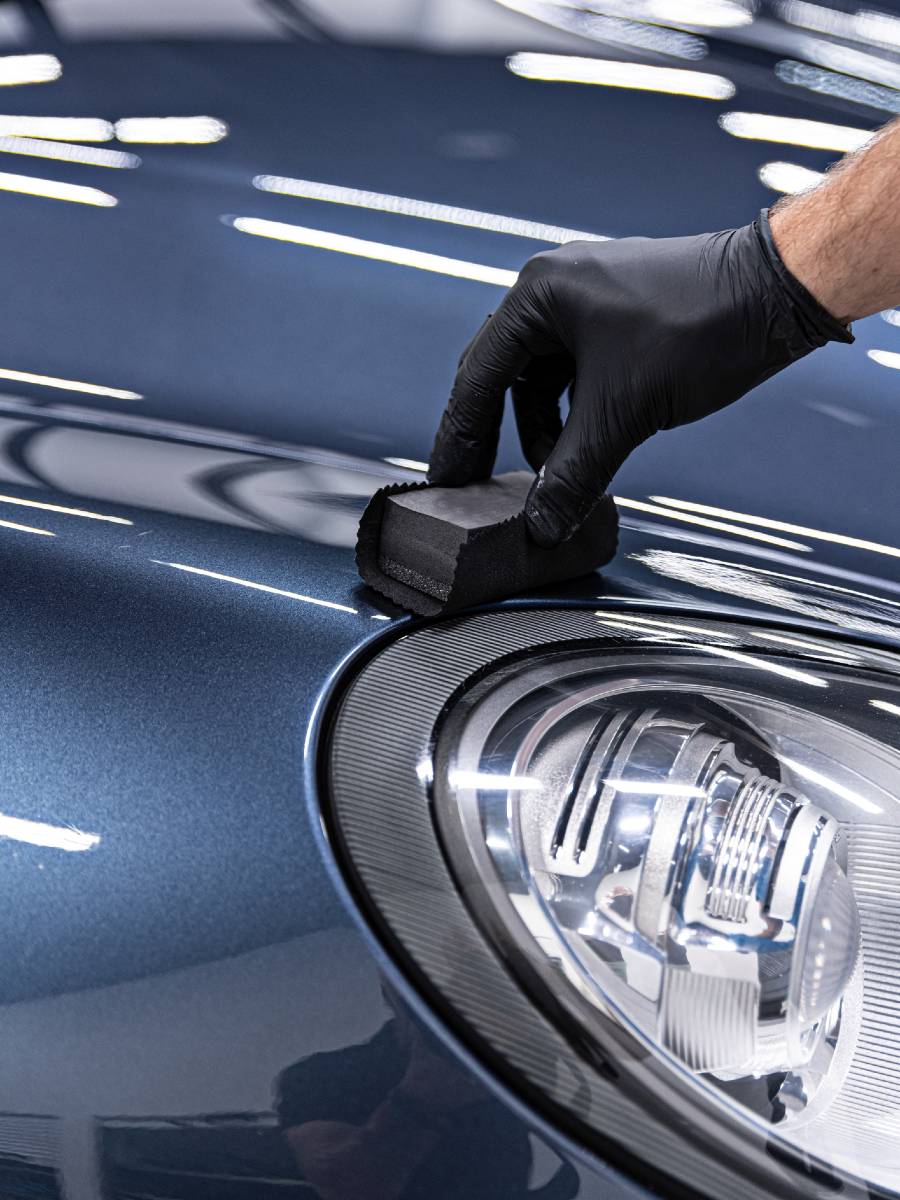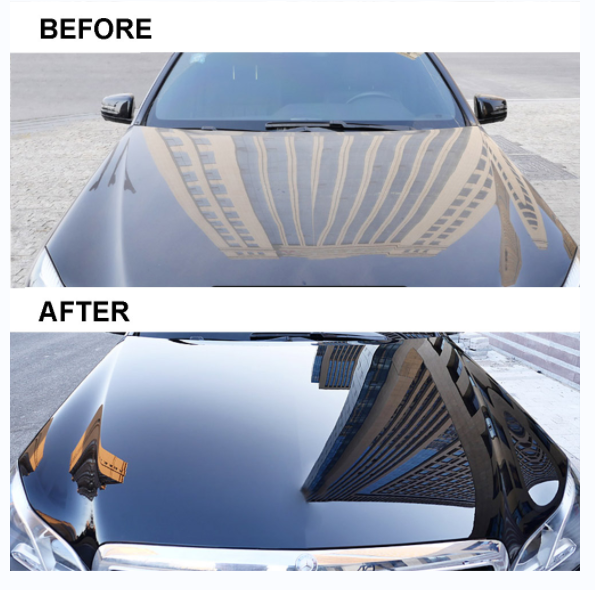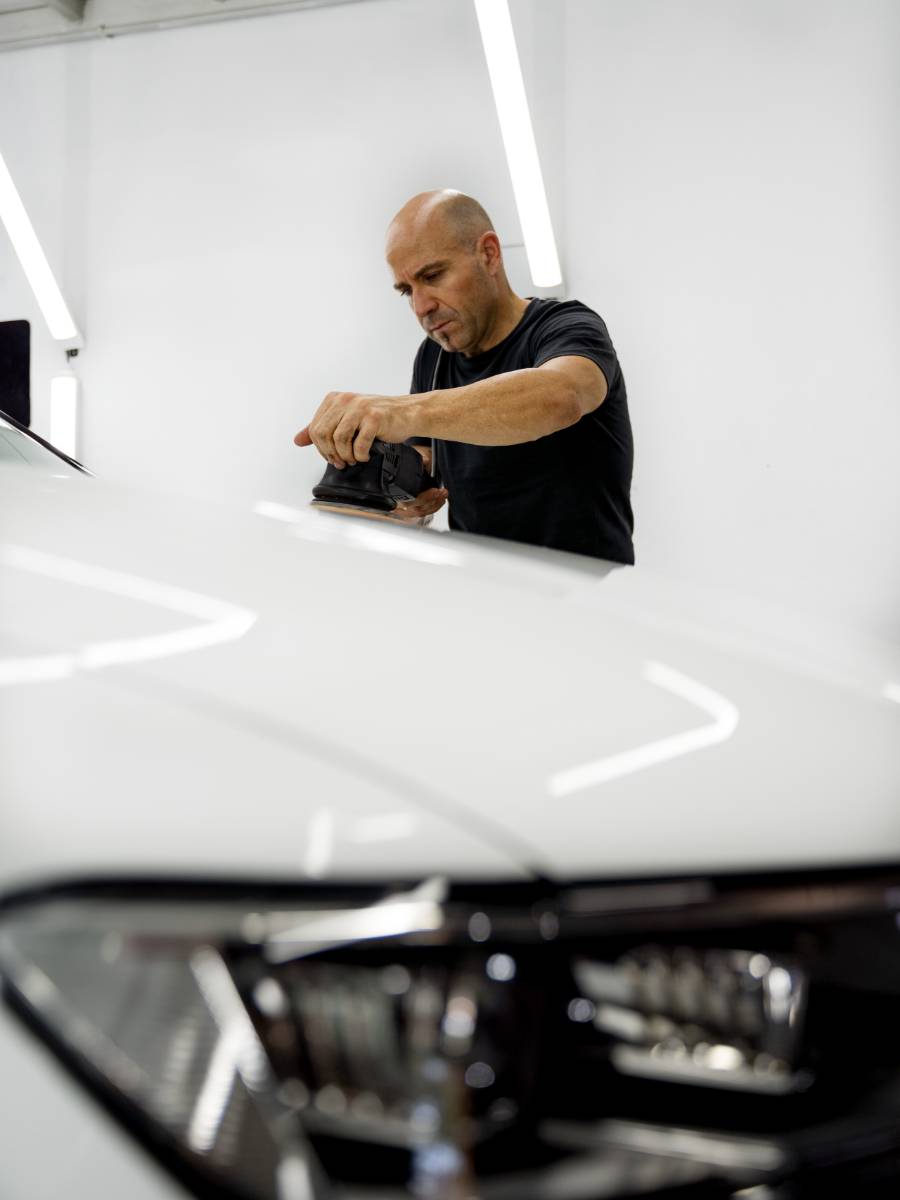How to Apply Ceramic Coating and Achieve Professional Results
How to Apply Ceramic Coating and Achieve Professional Results
Blog Article
Ceramic Coating vs. Standard Wax: Which Gives Better Long-Term Defense?
The discussion between ceramic finishes and traditional wax for lorry security has actually amassed significant interest amongst auto lovers and experts alike. Ceramic coverings boast remarkable longevity and resistance to environmental factors, yet the complexity of their application elevates questions regarding access and usefulness.
Overview of Ceramic Coating
Ceramic covering has acquired considerable popularity amongst vehicle enthusiasts and detailers alike due to its sophisticated protective top qualities. This innovative technology is created to create a long lasting, hydrophobic guard over an automobile's paint surface area, substantially boosting its resistance to ecological contaminants such as dirt, UV rays, and chemical stains. Unlike traditional wax, which supplies a short-lived layer of defense, ceramic coverings bond at a molecular level with the paint, using durable durability-- usually extending beyond two years with appropriate upkeep.
The application procedure includes precise prep work of the vehicle's surface area, consisting of cleaning and brightening to make sure optimum attachment. When used, the layer treatments to develop a robust layer that not just includes depth and gloss to the paint however likewise simplifies upkeep. With its hydrophobic residential properties, ceramic covering permits water and dirt to move off more easily, lowering the regularity of cleans and lessening the danger of swirl marks.
Moreover, ceramic coverings are readily available in various formulas, enabling users to pick items customized to their specific demands and preferences. Generally, ceramic finishing represents a considerable improvement in paint protection modern technology, delivering remarkable performance contrasted to conventional alternatives.
Introduction of Typical Wax
Traditionally considered a staple in auto care, wax serves as a preferred choice for those looking for an uncomplicated method to improve and safeguard their vehicle's paint - ceramic coating. Automotive wax commonly comprises all-natural components, such as carnauba, or artificial substances, designed to develop a safety layer externally of the paint. This layer not only enhances the automobile's gloss and beam but additionally supplies a barrier against ecological contaminants
The application of wax is generally easy to use, making it accessible for both experts and DIY enthusiasts. It can be applied by hand or maker, enabling versatility in the outlining process. As soon as applied, wax calls for a healing duration, after which it hardens to develop a protective shell. Wax is additionally recognized for its capacity to ward off water, advertising a beading effect that aids in the prevention of water places and corrosion.
However, while wax is efficient for boosting the aesthetic appeal of a vehicle, it is necessary to note that the protection it supplies may require much more frequent reapplication contrasted to different items, such as ceramic finishes. Generally, typical wax remains a popular option for those focusing on simplicity of usage and instant aesthetic improvement.
Sturdiness and Durability Comparison
While both ceramic coverings and standard wax offer protective advantages for automotive paint, their longevity and durability vary substantially. Traditional wax, commonly made from all-natural carnauba or artificial polymers, generally supplies a safety layer that lasts roughly 3 to six months. This reasonably brief life-span necessitates routine reapplication to keep ideal defense.
In contrast, ceramic finishes are engineered from innovative nanotechnology, forming a covalent bond with the paint surface. This leads to a durable, hydrophobic layer that can endure for two to 5 years, relying on the product and ecological problems. The remarkable toughness of ceramic finishes is attributed to their chemical framework, which uses enhanced resistance to scratches, UV rays, and oxidation.

Protection Versus Environmental Variables
Securing an automobile's paint from ecological variables is critical for maintaining its appearance and worth over time. Cars are regularly subjected to a selection of elements, consisting of UV rays, bird droppings, tree sap, acid rain, and road gunk, every one of which can endanger the stability of the paintwork.
Ceramic finishings give a robust protection against these ecological assailants. Unlike traditional wax, which can weaken swiftly under UV direct exposure, ceramic layers develop a long lasting, hydrophobic layer that withstands the damaging effects of sunlight and environmental contaminants. This innovative innovation creates a chemical bond with the car's surface area, supplying premium security that lasts for several years, also in extreme problems.
Standard wax, while much easier to use, commonly calls for constant reapplication and supplies minimal resistance to impurities and UV rays. With time, it can break down, leaving the paint susceptible to scrapes and oxidation. On the other hand, ceramic coverings preserve their protective high qualities longer, substantially lowering the risk of paint damage and making sure that the automobile retains its visual allure. As an outcome, ceramic layers are significantly recognized as the remarkable option for long-lasting protection versus ecological aspects.
Application and Maintenance Distinctions
The methods of application and subsequent upkeep for ceramic coverings and typical wax differ substantially, go to this web-site influencing the general user experience and efficiency of each product. Ceramic finishes need an even more intricate application process, usually including surface area prep work that consists of washing, sanitizing, and brightening the automobile. When the surface area prepares, the ceramic coating is applied in a controlled environment, typically requiring professional know-how to ensure proper curing and bonding to the paint.

While both items improve lorry appearance, the longer-lasting protection used by ceramic finishings might validate their initial investment, regardless of the more requiring application process. On the other hand, traditional wax stays a popular selection for those seeking a less complex, albeit short-term, option.

Verdict
In conclusion, ceramic coatings demonstrate considerable advantages over conventional wax in regards to durability and environmental protection. With a lifespan prolonging two to five years and exceptional resistance to UV rays, dirt, and chemical stains, ceramic coverings provide a more effective service for long-lasting car maintenance. The application process might require specialist experience, the resulting expense savings and decreased regularity of reapplication underscore the worth of ceramic finishes for those seeking optimal vehicle security.
The argument in between ceramic finishes and conventional wax for vehicle security has actually gathered significant focus among auto enthusiasts and specialists alike. Unlike standard wax, which provides a momentary layer of defense, ceramic finishes bond at a molecular level with the paint, using long-lasting longevity-- usually prolonging past 2 years with correct upkeep.
While both ceramic coverings and standard wax offer protective advantages for automotive paint, their durability and longevity vary dramatically. For cars and truck enthusiasts seeking long-lasting security, ceramic coatings present an engaging benefit over traditional wax products.
In final thought, ceramic coatings demonstrate significant benefits over traditional wax in terms of sturdiness and ecological protection.
Report this page